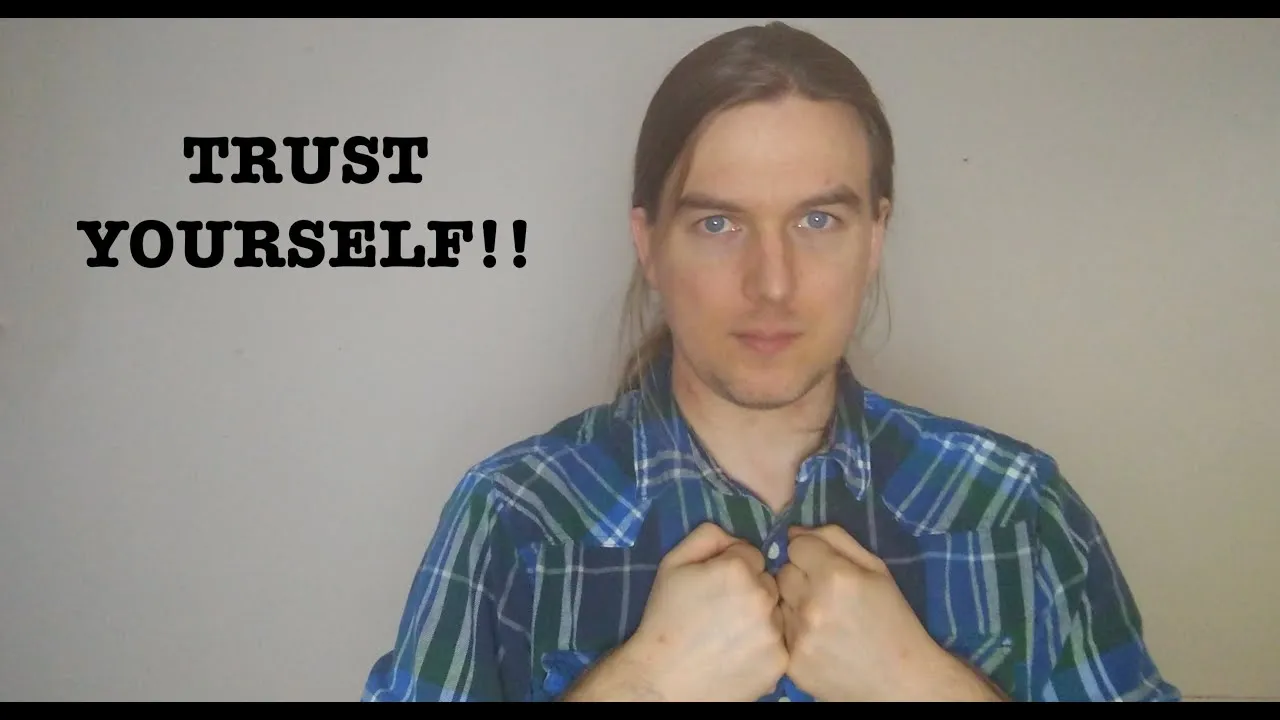This video discusses how to start trusting yourself.
REFERENCES:
Abramson, Metalsky, & Alloy (1989). Hopelessness depression: A theory-based subtype of depression. https://psycnet.apa.org/record/1989-26014-001
Amagai (1997). The effects of trust on self-esteem: The developmental changes in the lifelong stages
Anderzen-Carlsson, Persson Lundholm, Kohn, & Westerdahl (2014). Medical yoga: another way of being in the world-a phenomenological study from the perspective of persons suffering from stress-related symptoms https://pubmed.ncbi.nlm.nih.gov/24434055/
Bailey & Leon (2019). A systematic review and meta-analysis of age-related differences in trust. https://www.ncbi.nlm.nih.gov/pmc/articles/PMC6840254/
Banik, Schwarzer, Knoll, Czekierda, & Luszczynska (2018). Self-efficacy and quality of life among people with cardiovascular diseases: A meta-analysis https://pubmed.ncbi.nlm.nih.gov/29878834/
Bohart, Gealey, Clark, Gifford, Hoyle, & McBride (1977). Self-perception of therapeutic gain as a function of situational cues https://www.sbp-journal.com/index.php/sbp/article/view/174
Duberg, Moller, & Sunvisson (2016). "I feel free": Experiences of a dance intervention for adolescent girls with internalizing problems https://pubmed.ncbi.nlm.nih.gov/27416014/
Dumler-Winckler (2018). Can genius be taught? Emerson’s genius and the virtues of modern science. https://www.tandfonline.com/doi/abs/10.1080/03057240.2018.1438249?journalCode=cjme20
Feingold (1994) Gender differences in personality: a meta-analysis https://pubmed.ncbi.nlm.nih.gov/7809307/
Georing (2009). POSTNATAL REPRODUCTIVE AUTONOMY: PROMOTING RELATIONAL AUTONOMY AND SELF‐TRUST IN NEW PARENTS https://pubmed.ncbi.nlm.nih.gov/19076938/
Hannigan, Edwards, & Burnard (2004). Stress and stress management in clinical psychology: Findings from a systematic review. https://psycnet.apa.org/record/2004-95309-002
Murray, Holmes, Griffin, Bellavia, & Rose (2001). The mismeasure of love: How self-doubt contaminates relationship beliefs. https://psycnet.apa.org/record/2001-00876-004
Oleson, Poehlmann, Yost, Lynch, & Arkin (2001). Subjective overachievement: individual differences in self-doubt and concern with performance https://pubmed.ncbi.nlm.nih.gov/10831310/
Schwender, Spengler, Oedl, & Mess (2018). Effects of Dance Interventions on Aspects of the Participants' Self: A Systematic Review https://pubmed.ncbi.nlm.nih.gov/30065676/
Shoji, Cieslak, Smoktunowicz, Rogala, Benight, & Luszczynska (2016). Associations between job burnout and self-efficacy: a meta-analysis https://pubmed.ncbi.nlm.nih.gov/26080024/
Springham & Huet (2020). Facing our shadows: understanding harm in the arts therapies https://www.tandfonline.com/doi/full/10.1080/17454832.2020.1719168
Tesser, Campbell, & Mickler (1983). The role of social pressure, attention to the stimulus, and self-doubt in conformity. https://psycnet.apa.org/record/1984-09517-001
Van Lange (2015). Generalized Trust: Four Lessons From Genetics and Culture https://journals.sagepub.com/doi/10.1177/0963721414552473
Woodyatt & Wenzel (2014). A needs-based perspective on self-forgiveness: Addressing threat to moral identity as a means of encouraging interpersonal and intrapersonal restoration. https://psycnet.apa.org/record/2013-42717-016
▶️ 3Speak
